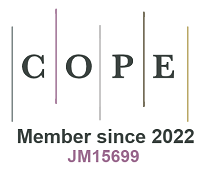New wine in old bottles: azo group as novel covalent template for the precise synthesis of all-benzene “improbable” rotaxanes
Keywords
As classical mechanically interlocked molecules (MIMs), rotaxanes and catenanes not only feature aesthetically appealing structures but also exhibit unique dynamic properties due to the restricted molecular motion imparted by mechanical bonds[1,2]. In recent years, their broad applications in artificial molecular machines, molecular recognition, luminescent materials, and catalysis have spurred growing interest[3-5], driving chemists to explore innovative synthetic strategies and structural designs. Since the pioneering synthesis of catenane by Wasserman in 1960[6], extensive efforts have been devoted to developing methods for MIMs construction. Early synthetic strategies primarily relied on statistical threading and covalent templates until a major breakthrough in the 1980s, when Dietrich-Buchecker et al. developed a metal template approach using a 1,10-phenanthroline–Cu(I) complex as the key intermediate[7]. This method not only realizes the efficient preparation of MIMs, but also leads to the successful construction of multifunctional skeletons through pre- or post-modification of key building blocks. Furthermore, beyond metal ion coordination templates, various reversible weak interactions - including electrostatic forces, π–π stacking, and hydrogen or halogen bonding - have been employed to construct MIMs[8]. However, these methods rely on polar or coordinating functional groups, restricting their applicability to the synthesis of non-polar MIMs. After the first example of cycloalkane-based catenane[9], the synthesis of heteroatom-free MIMs composed of only carbon and hydrogen, especially MIMs consisting of only benzene rings, has remained largely unexplored.
The first MIMs composed entirely of benzene rings were developed by Segawa et al. in 2019[10]. Their approach utilized spirobi(dibenzosilole) as removable templates, which, upon treatment with fluoride in alcohol, were quantitatively converted into two biphenyls, facilitating the construction of interlocked structures without a trace. Through this “traceless” synthetic strategy, they successfully synthesized and isolated cycloparaphenylene (CPP)-based ([12]CPP)([12]CPP) and ([12]CPP)([9]CPP) catenanes, and the [24]CPP trefoil knot. However, despite this remarkable breakthrough, progress in this field has been limited, underscoring the need for new synthetic methods to construct CPP-based MIMs.
Drawing inspiration from the selective N=N bond cleavage of azoreductase in nature, Bu et al. proposed that the azo group, a classical chromophore and photoswitchable unit, could serve as a removable template, allowing its traceless elimination through synthetic operations to facilitate the construction of catenanes and rotaxanes with an all-benzene skeleton[11]. Building on the stability and accessibility of the azo group, they demonstrated for the first time in 2022 that the azo group can act as a π-conjugated covalent template and successfully synthesize a novel all-benzene [2]catenane, namely, meta-CPP catenane, thus revealing its practicality in the synthesis of MIMs. Compared with the spirosilane-templated catenane synthesis route, this method offers a simpler approach, consisting of two key steps: (1) template-directed intramolecular macrocyclization to form the construction of azo-bonded catenane precursors; (2) sequential reduction and cleavage of one N=N bond and two C–N bonds to complete the precise synthesis of the target catenane [Figure 1].
Based on the successful development of the azo-based conjugated covalent template strategy, Bu et al. have recently further applied this approach to tackle the challenging synthesis of all-benzene skeleton rotaxanes[12]. All-benzene skeleton rotaxanes inevitably lack mutually recognizable functional groups in an interlocking structure, and thus the synthesis of such so-called “impossible” (or “improbable”) rotaxanes remains a considerable challenge. To enable the modular synthesis of rotaxanes, an azo-linked rotaxane precursor 1 was first constructed, where the azo group and aryl bromide acted as cleavable covalent templates and cross-coupling sites, respectively. Using this precursor, three all-benzene skeleton rotaxanes, including [2]rotaxanes and [3]rotaxanes, were successfully prepared [Figure 2]. The azo-linked rotaxane precursor 2 was efficiently obtained through the cross-coupling of compound 1 with tert-butyl-substituted m-terphenyl derivative 2, which served as a stopper. Further, after screening, LiAlH4 was found to be a suitable reducing agent to transform 3 into aniline-derived rotaxane 4, thus providing a mechanical bond based on an all-benzene skeleton. The intermediate 4 was then subjected to deamination with hypophosphorous acid, enabling the traceless removal of the azo group template and yielding the all-benzene [2]rotaxane 5. Furthermore, the brominated [10]CPP precursor 7 was employed as a macrocyclic stopper. Subsequently, compound 6, obtained via the borylation of 1, underwent cross-coupling followed by reductive aromatization, successfully yielding the azo-linked rotaxane precursor 8, which was end-capped by two [10]CPP moieties. The azo group template was then removed to accurately construct the all-benzene [2]rotaxane 10.
Figure 2. Synthesis routes of “impossible” [2]rotaxanes 5, 10, and [3]rotaxane 13 with all-benzene scaffolds. Reagents and conditions: (i) Pd(OAc)2, dppf, K2CO3, toluene/H2O, 80 °C; (ii) LiAlH4, 1,4-dioxane, 120 °C; (iii) t-Bu-ONO, THF, 0 °C, then 50% aq. H3PO2, 60 °C; (iv) Pd G4-SPhos, B2pin2, KOAc, 1,4-dioxane, 90 °C; (v) Pd(OAc)2, dppf, K2CO3, toluene/H2O, 50 °C; (vi) sodium naphthalenide, THF, -78 °C, then quenched with I2; (vii) LiAlH4, 1,4-dioxane, 120 °C; (viii) t-Bu-ONO, THF, 0 °C, then 50% aq. H3PO2, 25 °C; (ix) Pd(OAc)2, dppf, K2CO3, toluene/H2O, 80 °C; (x) Pd(OAc)2, dppf, K2CO3, toluene/H2O, 80 °C; (xi) LiAlH4, 1,4-dioxane, 120 °C; (xii) t-Bu-ONO, THF, 0 °C, then 50% aq. H3PO2, 60 °C.
To further demonstrate the synthetic versatility of 1, biphenyl-derived bis(boronic acid pinacol ester) was used as a linker and cross-coupling with two equivalents of 1 yielding compound 11, which was subsequently linked to end-capped 2 to afford the [3]rotaxane precursor 12. Finally, removal of the two azo groups in 12 led to the successful construction of the more complex [3]rotaxane 13. Notably, the resultant rotaxanes not only exhibit excellent photophysical properties but also successfully enable chemical stimuli-driven reversible conversion of the interlocked all-benzene backbone conformation by incorporating bulky steric groups into the aniline-derived rotaxane. This modular synthesis of all-benzene skeleton rotaxanes highlights the high efficiency and great power of this strategy, laying the foundation for the iterative construction of more complex interlocked conjugated molecules.
In this research highlight, an azo-based conjugated covalent template strategy was discussed, demonstrating the successful application in the precise synthesis of novel all-benzene MIMs. The traceless and removable azo group template offers a general synthetic strategy for constructing mechanical bonds. Moreover, this outstanding study presents valuable and practical design strategies, including ingeniously designed and easily synthesized building blocks, enabling the modular construction of rotaxanes and driving advancements in this field. Inspired by this study, the construction of more complex all-benzene MIMs with stimuli-responsive properties appears achievable, thereby greatly broadening their potential applications. However, research on MIMs with all-benzene skeletons is still in its early stages, highlighting the need for new design strategies and methodologies, especially for challenging architectures such as all-benzene poly[n]rotaxanes and poly[n]catenanes. Considering the rapid development of the field of MIMs, we believe that these advancements will not only deepen the understanding of mechanical bonds in fully conjugated systems but also open new avenues for functional materials.
DECLARATIONS
Authors’ contributions
Wrote and revised the manuscript: Wang, Y.; Wang, W.; Yang, H. B.
Availability of data and materials
Not applicable.
Financial support and sponsorship
Yang, H. B. acknowledges financial support from the National Key R&D Program of China (2021YFA1501600); Wang, W. is supported by the Shanghai Pilot Program for Basic Research (TQ20240205); and Wang, Y. receives funding from the Postdoctoral Fellowship Program of CPSF (GZC20230810).
Conflicts of interest
Yang, H. B. is Associate Editor of the journal Chemical Synthesis. Yang, H. B. was not involved in any steps of editorial processing, notably including reviewers’ selection, manuscript handling, or decision-making. The other authors declare that there are no conflicts of interest.
Ethical approval and consent to participate
Not applicable.
Consent for publication
Not applicable.
Copyright
© The Author(s) 2025.
REFERENCES
1. Sauvage, J. P.; Dietrich-Buchecker, C. Molecular catenanes, rotaxanes and knots: a journey through the world of molecular topology. Wiley; 2008.
2. Bruns, C. J.; Stoddart, J. F. The nature of the mechanical bond: from molecules to machines. Wiley; 2016.
3. Stoddart, J. F. Mechanically interlocked molecules (MIMs)-molecular shuttles, switches, and machines (Nobel Lecture). Angew. Chem. Int. Ed. Engl. 2017, 56, 11094-125.
4. Wang, X. Q.; Li, W. J.; Wang, W.; Yang, H. B. Rotaxane dendrimers: alliance between giants. Acc. Chem. Res. 2021, 54, 4091-106.
5. Sluysmans, D.; Stoddart, J. F. The burgeoning of mechanically interlocked molecules in chemistry. Trends. Chem. 2019, 1, 185-97.
6. Wasserman, E. The preparation of interlocking rings: a catenane. J. Am. Chem. Soc. 1960, 82, 4433-4.
7. Dietrich-Buchecker, C. O.; Sauvage, J. P.; Kintzinger, J. P. Une nouvelle famille de molecules : les metallo-catenanes. Tetrahedron. Lett. 1983, 24, 5095-8.
8. Gil-Ramírez, G.; Leigh, D. A.; Stephens, A. J. Catenanes: fifty years of molecular links. Angew. Chem. Int. Ed. Engl. 2015, 54, 6110-50.
9. Schill, G.; Schweickert, N.; Fritz, H.; Vetter, W. [2]-[Cyclohexatetraoctane][cyclooctacosane]catenane, the first hydrocarbon catenane. Angew. Chem. Int. Ed. Engl. 1983, 22, 889-91.
10. Segawa, Y.; Kuwayama, M.; Hijikata, Y.; et al. Topological molecular nanocarbons: all-benzene catenane and trefoil knot. Science 2019, 365, 272-6.
11. Bu, A.; Zhao, Y.; Xiao, H.; Tung, C. H.; Wu, L. Z.; Cong, H. A conjugated covalent template strategy for all-benzene catenane synthesis. Angew. Chem. Int. Ed. Engl. 2022, 61, e202209449.
Cite This Article
How to Cite
Download Citation
Export Citation File:
Type of Import
Tips on Downloading Citation
Citation Manager File Format
Type of Import
Direct Import: When the Direct Import option is selected (the default state), a dialogue box will give you the option to Save or Open the downloaded citation data. Choosing Open will either launch your citation manager or give you a choice of applications with which to use the metadata. The Save option saves the file locally for later use.
Indirect Import: When the Indirect Import option is selected, the metadata is displayed and may be copied and pasted as needed.
About This Article
Copyright
Data & Comments
Data


















Comments
Comments must be written in English. Spam, offensive content, impersonation, and private information will not be permitted. If any comment is reported and identified as inappropriate content by OAE staff, the comment will be removed without notice. If you have any queries or need any help, please contact us at [email protected].